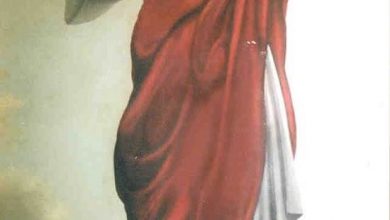Gorilla My Love is a short story written by Toni Cade Bambara, an African-American author, social activist, and filmmaker. The story is a part of the collection with the same title, published in 1972. The narrative is often characterized by its vivid portrayal of a young African-American girl’s perspective as she navigates her surroundings, family dynamics, and the complexities of growing up. Set against the backdrop of 1960s America, Bambara’s story is known for its unique voice and the insightful way it captures the thoughts and emotions of a child protagonist.
Gorilla My Love | Summary
The narrator recounts an event involving their relative, Hunca Bubba, who changed his name back to Jefferson Winston Vale. The narrator usually sits in the front seat during car trips, earning them the nickname ‘Scout.’ Hunca Bubba, now Jefferson, is in the back with pecans and is infatuated with a woman whose photo they possess. The narrator recalls an incident from Easter when they, along with their siblings, couldn’t find a movie to watch. They decided to go to the Washington and Gorilla Theater, where ‘Gorilla, My Love’ was playing. Since they didn’t have much money, they caused a commotion by loudly popping potato chip bags. This caught the attention of the matron, who would shine her flashlight at them. The narrator relished in causing disruptions and enjoyed their role as the instigator.
The narrator often takes charge in challenging situations, especially when their siblings are involved. They recount instances of protecting their siblings from trouble, like hiding money from older boys or standing up against those who would bully their siblings. The narrator expresses frustration when a movie they expect to be about gorillas turns out to be a religious film. They and other children in the theater protest by making noise, prompting the matron to intervene. Despite their initial rebellion, they settle down to watch the movie, realizing it’s not as simple as they thought. The narrator imagines their family members reacting to the story of Jesus on the cross, envisioning their father, mother, and other relatives protesting and speaking up. They describe the family dynamic and clashes, highlighting their mother’s strong and assertive nature. The passage demonstrates the narrator’s vivid im agination and their perspective on how their family members might behave.
When the movie ends, it’s replaced by Bugs Bunny, which the children have already seen. Disappointed, the narrator and others demand a refund from the manager. Despite being alone at the manager’s door, the narrator is determined to stand up for their rights, frustrated with how adults often disregard children’s concerns. The narrator confronts the movie theater manager about the misleading film title and demands a refund for themselves, Baby Jason, and Big Brood. When the manager doesn’t comply, the narrator sets a fire under the candy stand, temporarily closing the theater. The incident leads to suspicion from their father, but the narrator explains their actions and the principles behind them. The family members appreciate the narrator’s assertiveness, and the narrator reflects on their upbringing of speaking up and taking responsibility for their actions.
In the car, the narrator directly questions their relative, Hunca Bubba (now Jefferson Windsong Vale), about his plans to marry a girl. The narrator brings up a memory from their childhood when Hunca Bubba promised to marry them when they grew up. Hunca Bubba dismisses it as teasing, which deeply hurts the narrator. They confront Hunca Bubba for breaking that promise and call him a ‘lying dog.’ Overwhelmed with emotions, the narrator starts crying, and even Baby Jason is upset. Granddaddy Vale tries to console them, and they continue their journey, feeling lost and betrayed by the changes and broken promises of the adults around them.
Gorilla, My Love | Analysis
‘Gorilla, My Love’ by Toni Cade Bambara is a poignant short story that explores the themes of childhood, disillusionment, empowerment, and relationships with adults. The story follows Hazel, a young and assertive girl, as she navigates the complexities of growing up and encountering the realities of the adult world. The story begins with Hazel and her siblings going to the movies, an activity they enjoy frequently. However, their excitement about watching “Gorilla, My Love” turns into disappointment when they realize the movie being shown is “King of Kings.” This discrepancy between expectations and reality serves as a metaphor for Hazel’s broader experiences of disillusionment as she confronts the inconsistencies of the adult world. Hazel’s interactions with adults, particularly her Uncle Hunca Bubba, Granddaddy Vale, and the matron in the movie theater, highlight her assertive nature and desire for honesty. When her uncle changes his name and breaks a promise to her, Hazel confronts him, expressing her disappointment and seeking accountability.
Cristina Di Mayo looks at how kids and teenagers are portrayed in the story and how their actions define them as potential change agents both inside and outside of the story. She contends that Bambara rejects the stereotype of children as helpless victims who are unaware of the social mechanisms at work in the environment they live and instead sees them as early political subjects who express her own militant beliefs. Her analysis considers particular facets of the children’s performance, including the use of vernacular and inventiveness as a revolutionary technique. In light of Bambara’s participation in the black liberation and women’s movements, she contextualizes these components, and the children protagonists in the stories are looked at as potential heirs to Bambara’s radical message.
In the narrative Hazel takes control of her own ‘tomboyism,’ performing it in an overtly self-aware way that paves the way for potentially radical outcomes and redefines the norms not only of the individual’s field but of the community at large. By resisting the pressure to be restrained in a more conventional and acceptable conduct. In the story, Hazel is dissatisfied with the movie she just saw and believes she was duped; as a result, she angrily confronts the theater director and demands a refund, acting in a situation where she knows her behavior will be perceived as shocking because it deviates from what is typical of a moviegoer. The movie theater is closed for a week as a result of Hazel’s revenge-fueled, enraged setting of fire to a sweets shop. With this episode, Bambara suggests that when dealing with injustices, the ‘feisty ladies’ in her stories are not hesitant to carry their wrath beyond their normal field and that this can have catastrophic repercussions.
According to Elizabeth Muther the narrative effort Hazel puts into her story—which is about empowerment and self-knowledge— is about convincing the reader that she will fully recover from the pain caused by the betrayals in the text. The torrent of self-revelations and the strength of self-disclosure are essential. Hazel possesses the foresight that preadolescent girls occasionally possess just before they sink under the surface and are compelled to conform to the stifling scripts that society offers adult women. Bambara is both recalling and advising—and exemplifying in her work—Hazel’s singleness of thought and self-possession. Hazel is a radical resource because of her direct style of cutting through hypocrisy and exposing gender-specific self-subordination. It is not only ‘folk’ engagement; rather, it is Bambara’s vision of the future of activism. The girls of Bambara are rushing toward a different future after escaping the confines—literally the clothing—of traditional girlhood. They transition to a point of mutual awareness and respect that requires nothing through insight.
Gorilla, My Love | Themes
Throughout the story, the theme of childhood and the process of growing up is evident in Hazel’s perspective and experiences. As a child, Hazel holds a certain innocence and idealism. She sees the world with curiosity, enthusiasm, and a sense of trust in the adults around her. However, as the story progresses, Hazel’s experiences challenge her youthful beliefs. Her encounter with the misleading movie title and her uncle’s change of name shake her confidence in what she thought she knew. This theme highlights the loss of innocence and the inevitable journey toward a more mature understanding of the world’s complexities.
The dynamics between children and adults are a central theme. Hazel’s interactions with various adults, including her uncle Hunca Bubba, Granddaddy Vale, Mama, and others, illustrate the challenges of understanding and communication between generations. Misunderstandings arise due to differences in interpretation and perspective. The story underscores the impact that adult actions and words have on children’s perceptions. Hazel’s assertiveness in confronting her uncle about his broken promise reflects her desire for honesty and reliability in her relationships. The story is interlaced with the themes of disappointment and betrayal. She becomes frustrated as she sees grownups violate promises or act in ways that are inconsistent with her expectations. A couple of heartbreaking examples include her uncle’s change of name and his broken engagement. Her developing understanding that the world is not as simple and reliable as she originally thought is a result of these encounters.
The theme of empowerment and assertion is exemplified through the character of Hazel, the young protagonist of the story. Hazel is remarkably strong, confident, and willing to defend herself and her convictions despite her advanced age. Hazel has always questioned authority people when she feels their actions are unjust or contradictory. When expectations aren’t reached, she confronts the matron in the movie theater and doesn’t hesitate to voice her displeasure. The capacity to express her thoughts and opinions is a recurrent quality in Hazel. Hazel speaks her mind without holding back, whether she’s defending her legal identity or confronting her uncle about his new name and broken commitment. Hazel feels her uncle responsible after realizing that he had betrayed his commitment to wed her. She confronts him with her memories of their past interactions, unafraid to point out his inconsistencies and demand an explanation.
Hazel’s empowerment and assertion are significant because they contrast with the traditional portrayal of children as passive or easily dismissed. Through her character, the story emphasizes the importance of giving young voices agency and validity. This theme resonates beyond the narrative, reminding readers that children have the capacity to challenge norms, express their feelings, and effect change.
Gorilla, My Love | Title
The title ‘Gorilla, My Love‘ takes on a significant and ironic role in the plot point where Hazel and her siblings go to the movies expecting to watch a film titled ‘Gorilla, My Love,’ but end up watching ‘King of Kings,’ a movie about the life of Jesus. The significance lies in the stark contrast between the expectations set by the title and the reality of the film they encounter. This contrast mirrors the larger theme of the story: the disconnect between expectations and reality, particularly from a child’s perspective. Just as the children’s anticipation of an entertaining gorilla-themed movie is met with a religious film, their expectations about the world around them are challenged as they encounter the complexities of adult behavior, broken promises, and misunderstandings.
Gorilla, My Love | Character Sketch
The Narrator (Hazel): The story’s young protagonist, Hazel, is a spirited and perceptive African-American girl. Through her eyes, readers gain insight into her world and the challenges she faces as she navigates the complexities of family relationships and the adult world. Hazel is depicted as intelligent, outspoken, and confident. She holds a strong sense of justice and fairness, which drives her to question and challenge the actions of adults when they do not align with her expectations. Her journey from innocence to disillusionment is a central theme of the story, as she grapples with the harsh realities of broken promises and the limitations of understanding the adult world.
Gorilla, My Love | Literary Devices
The story is narrated from the first-person perspective of Hazel, a young girl, and this choice of narrative perspective has significant implications. Readers get a clear glimpse into Hazel’s thoughts, feelings, and perceptions thanks to her first-person narrator’s perspective. Readers see the world as a kid would, emulating the unadulterated curiosity, innocence, and responses that define her age. With this viewpoint, readers can empathize deeply with Hazel’s feelings and experiences. Her vocabulary, grammar, and sentence construction all reflect her age and upbringing. This sincerity gives the narrative more realism and makes her more sympathetic to readers. Readers learn about Hazel’s limited awareness of the adult world because the story is told from her point of view. She doesn’t always comprehend the complexities of adult behavior or the nuances of their interactions. This allows the story to explore themes of disillusionment and misunderstanding from a child’s viewpoint. As Hazel’s narrative unfolds, readers witness her growth and transformation. Her changing perceptions and understanding of the world around her become evident through her reflections. This growth adds depth to her character and underscores the overarching theme of childhood and growing up.
Dialogue plays a significant role as it not only serves as a means of communication between characters but also serves to advance the plot, reveal character traits, and reinforce the story’s themes. Dialogue is a powerful tool for revealing the personalities, attitudes, and emotions of the characters. Readers learn about their histories and viewpoints through their speeches. For instance, Hazel’s direct and assertive speech portrays her independent attitude, whereas Uncle Hunca Bubba’s remarks reflect his more carefree and playful personality. The discussion between family members serves as the main means of communication. Characters’ conversations with one another allow readers to observe the conflicts, connections, and dynamics inside the family unit. Hazel’s family members’ chats with her help to depict their interactions and the particular dynamics of the family in realistic detail. The use of dialogue aids in preserving a youthful viewpoint. Hazel’s dialogue reflects her mature awareness of the world and her distinct style of expression. This authenticity allows readers to engage with the story from her point of view.
Imagery is an important literary device that helps create vivid mental pictures and evoke emotions in the readers. The story’s opening scene in the movie theater is rich with imagery. The description of the children buying ‘bags of Havmore potato chips’ that make a loud noise when popped creates a sensory image of the crunchy snacks. The emotional turmoil experienced by Hazel is depicted through imagery. When she confronts her uncle about his broken promise, she describes feeling ‘crumplin down in the seat’ and not caring.
The story is often praised for its exploration of themes related to innocence, disillusionment, family relationships, and the challenges of understanding the adult world. ‘Gorilla, My Love’ showcases Bambara’s skill in delving into the intricate realities of life while using a child’s viewpoint to provide a fresh and thought-provoking perspective. Through the eyes of its young protagonist, the story provides a unique perspective on the challenges and revelations that shape her understanding of the world around her.



